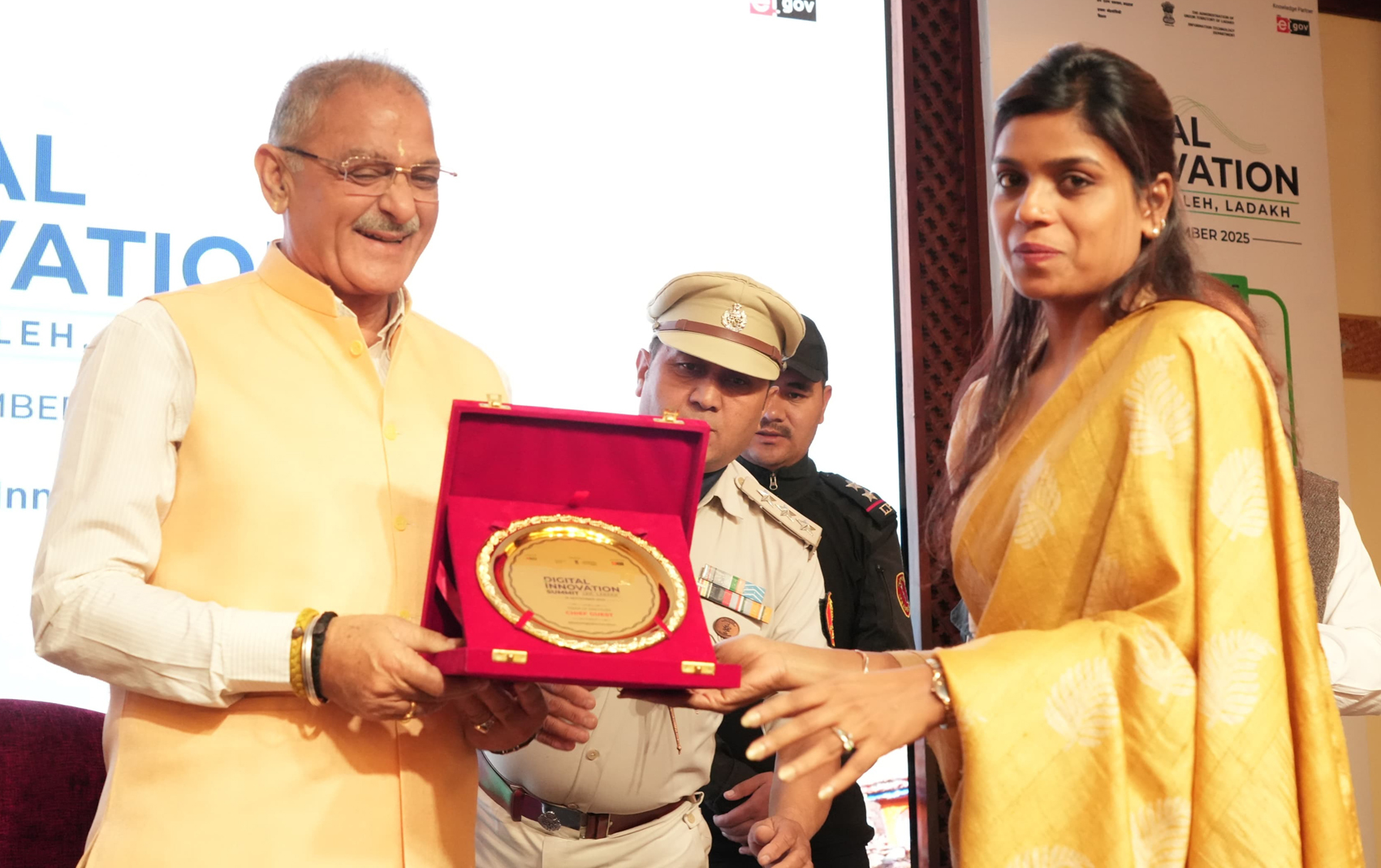 Early Times Report Early Times Report
LEH, Sept 20: The Information Technology Department of the Union Territory of Ladakh successfully hosted the Digital Innovation Summit in Leh, under the national initiative "Digital India - Powering Progress with Purpose."
The conclave brought together senior policymakers, administrators, technology experts, and industry leaders to deliberate on how digital transformation can strengthen governance, connectivity, and inclusive development in the unique context of Ladakh.
The summit opened with remarks from Dr. Ravi Gupta, CEO and Editor-in-Chief of Elets Technomedia, who emphasized the transformative impact of artificial intelligence and digital technologies on governance and development.
Shashanka Ala, IAS, Administrative Secretary of the IT Department, UT Ladakh, underscored the need for vision and collaboration, stressing that digital governance in Ladakh must grow authentically from the realities of Himalayan life.
During the Digital Innovation Summit 2025 in Leh, Lieutenant Governor of Ladakh, Shri Kavinder Gupta highlighted Ladakh's emergence as a digital innovation leader despite its challenging terrain, emphasizing its role in advancing the Hon'ble Prime Minister's vision of a digitally empowered Bharat and a trillion-dollar digital economy. He stated that Ladakh's proactive digital initiatives-including the launch of online public services, digitisation of land records under DILRMP, vehicle tracking for transport safety, and being the first UT to introduce the MedLEaPR medico-legal system-stand as a model for remote regions. He underscored the UT's commitment to last-mile connectivity across its vast 59,146 sq. km area, with efforts like e-Office, online scholarships, digital certificates, and cashless payments.
Highlighting connectivity milestones, he informed that all 193 Gram Panchayats are connected under BharatNet, ?125 crore has been sanctioned for OFC expansion, 234 of 243 villages have mobile connectivity, and 4G has reached 169 villages, with 175 new towers sanctioned, including solar-powered ones in strategic border areas. On renewable energy, he cited major infrastructure projects such as the 220 kV Drass-Zanskar line, a 200 MW solar project with storage, and a 280 MW solar park, which will improve power reliability and create employment. |
